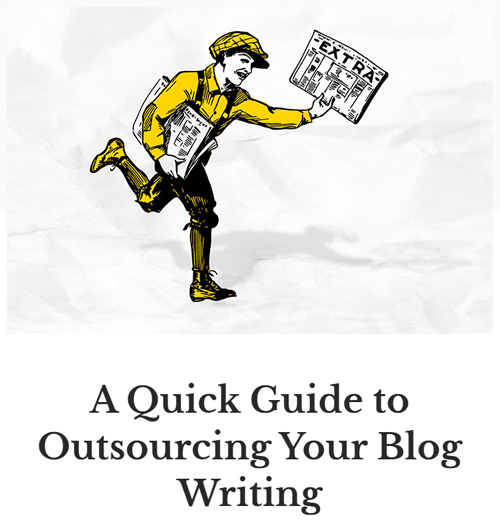Home » Content Marketing » Pillar Content: Is It Really Worth the Investment?

Pillar Content: Is It Really Worth the Investment?
Yes, pillar content is worth every penny, and here’s why.
Back in 2015, Google introduced RankBrain to its core algorithm. RankBrain is an AI algorithm designed to process search queries and serve more relevant results.
In that same year, Google released Mobilegeddon, an algorithm update designed to reward mobile-friendly websites with higher search engine rankings.
Both updates were Google’s response to developing trends in search queries, for instance:
- Increased mobile searches.
- Increased voice searches (driven by advancements in speech recognition technology).
- Longer and more conversational search queries.
With the growing use of mobile devices and voice, search engines like Google had to grapple with complex speech concepts like context and user intent.
This made it crucial for them to understand exactly what a website was about, and how relevant it was to a search query.
So how does a pillar content strategy fit into this picture?
Well, pillar pages organise all your blogging content according to topic clusters, with each cluster linked to various supporting articles, blogs, etc.
This creates a greater user experience for your target audience and makes it easier for Google to classify your website—just what you need for a successful SEO performance.
“Successful SEO is not about tricking Google. It’s about partnering with Google to provide the best results for Google’s users.”— Phil Frost
But successful SEO is just the tip of the iceberg. Pillar content has a lot more to offer your eCommerce business. Read on to find out how.
How Can Pillar Pages Impact My Business?
Straight away, implementing a pillar page strategy cleans up your website.
Pillar pages break down your marketing content into specific subtopics and keywords. This clears out redundant topics and establishes the general direction for your marketing content.
Consequently, pillar pages affect your business in the following ways.
They Help You Develop Trust and Authority
No one wants to spend time sorting through what’s relevant or not on your website. At best, you can expect visitors to skim through the various headings before reading your first article. So you need to make the impression that you have the answers they need.
Pillar pages break down general content into relevant and specific subtopics. This focused approach adds to the depth of information on your website, which builds your authority on a given topic.
With this established reputation, your website gains more organic traffic and stands a better chance of conversions, with fewer bounce rates.
They Increase Your Social Shares and Referrals
It’s human nature to share memorable experiences. For instance, telling others about experiencing a service that blew your expectations away and set a new standard.
Imagine what could happen when a visitor discovers in-depth, exhaustive, and authoritative content with no follow-up search necessary.
They’re most likely going to share their findings.
Pillar pages make it easier for searchers to find exactly what they’re looking for, and fast. This creates a pleasant user experience that is likely to earn you more referrals and shares.
For your business, this means greater brand awareness and better brand perception.
They Increase the Number of Backlinks to Your Website
With a well-established reputation and the search traffic to match, your website is likely to gain more external links.
These are backlinks or inbound links and they represent votes from other websites. These are votes on the quality and usefulness of your content.
As such, the quality of your backlinks matters, and backlinks from authoritative websites count even more. Websites with higher quality backlinks have higher search engine rankings. Consequently, they experience greater organic traffic and chances of conversion.
Because pillar content is more in-depth and authoritative, it’s a great way to build your website’s reputation and earn quality backlinks.
They Help You Deliver a Consistent Marketing Message
Pillar pages are built around your unique selling point. As a result, they define the overall direction and intention of all your marketing content. This includes your supporting blogs, articles, infographics, etc.
A clear direction makes it easier for your team to develop topic clusters, supporting content, and set marketing priorities for all of your posts. Collectively, this creates consistency in the type of content your team produces.
For your website, this translates to stronger communication, streamlined content, and a superior user experience.
The Structure of Pillar Content
With an understanding of how pillar content can impact your business, let’s look at its key components. We’ll delve into:
- How to organise your pillar content
- The composition of each section
- Real-life examples of pillar posts
- Common good practices
The following table highlights the different sections of pillar content, with a focus on the word count and characteristics.
| Section | Word Count | Features |
| Pillar pages | 3000 |
|
| Topic clusters/ Sub-pillars | 2000-2500 |
|
| Supporting blogs | 1000-1500 |
|
For a better understanding of how to create pillar pages, the following are real-life examples of pillar posts according to the various sections mentioned in the table above.
Designing Your Pillar Pages
Here are two examples of pillar pages from a blogging company. The pages offer an overview of outsourcing blogs, as expected of a blogging company.
Pillar pages are designed for a target audience and therefore aim to be as relevant as possible. In both examples, the pillar pages target business owners or managers with a focus on their branding needs.
When outsourcing their blogging, what information would be important to business owners?
Developing Your Sub-Pillars
Sub-pillars dive deeper into a specific topic based on the main pillar page. This is where your website establishes authority with your target audience since the information is more in-depth.
In this example, the sub-pillar focuses on the success factors of outsourcing blogging services. This branches from the core topic, outsourced blog writing.
What Could Your Supporting Blogs Look Like?
A blog post will answer specific questions, either from a collection of frequently asked questions, or from people asking. Each blog links to a sub-pillar which then links to the main pillar page.
In this blog example, the focus is on how to find a blog writer when outsourcing. It’s specific to finding a writer but ties into the main pillar (again, outsourcing your blog writing).
Expert Tips for Creating Pillar Pages
- Use sidebars to link to all your pillars and sub-pillars. This makes it easier for your visitors to navigate between topics they’re most interested in.
- When linking to external sources, only select authoritative websites. These usually contain .edu and .gov in their domain.
- Use keywords and questions for your title and headlines.
- Don’t link to a competitor’s website.
Ready to Get Started on Your Pillar Page?
Developing an effective pillar page can be difficult. A lot of hours go into keyword research, judging your competition, and analyzing search queries, just to get started.
Your pillar content then comes to represent your brand and how your customers perceive it. Frankly, your reputation depends on it.
Fortunately, with the right agency behind you, delivering world-class content has never been easier.
Whether you’re starting or updating your pillar pages, a team of dedicated writers will ensure returns on your investment.
“It has been a pleasure working with the CopySmiths team – they are reliable, efficient, and great at curating high-quality content on complex subjects. They always provide regular updates on all article orders and deliver on their promises.” —Sander Tamm, E-Student
Contact us today and learn how we can do this for you.
Frequently Asked Questions
What Is the Difference Between a Pillar Page and a Landing Page?
Is a Pillar Page a Blog?
What Is a 10x Pillar Page?
This is a pillar page with content that is 10 times better than the highest-ranked resource covering that topic. 10x pillar pages are often ungated, and therefore accessible without filling in a form. This makes them highly accessible.
CopySmiths
I'm Katrina McKinnon, founder of CopySmiths and Small Revolution. In my 20 years of experience, I have helped online businesses create high-performing content specifically on an eCommerce store's blog. Find me on LinkedIn and Twitter.

CopySmiths offers the best blog writing services for online stores.
If you'd like us to write blog articles for you, click here.
Most Recent
- 3 Bold Questions You Should Ask When Hiring A Content Writer

- 5 Practical Reasons You Should Use a Blog Post Template

- 4 Amazing Benefits of Using a Title Generator for New eCommerce Blogs

- 10 Awesome Bio Examples Your Online Store Blog Should Emulate

- 8 Basic Steps to Successful Content Development Every Time

Podcasts
Got a question?
Ask our friendly team about our article writing services.
Subscribe to CopyZine
Monthly, hand-picked stories of the best in eCommerce Content.










